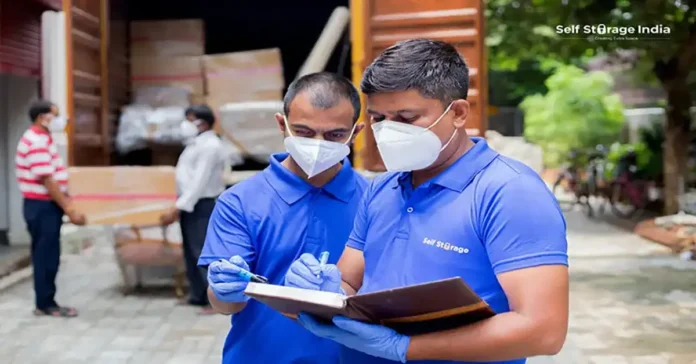Moving can be both exciting and challenging, especially when it comes to furniture protection. Whether you’re downsizing, renovating, or simply moving to a new home, protecting your furniture is important.
One of the first steps in furniture protection is decluttering. By sorting through your belongings and removing items you no longer need, you not only reduce the amount of furniture to move but also make the packing process more manageable. Next, consider investing in proper packing materials such as bubble wrap, furniture blankets, and sturdy boxes. Wrap fragile items carefully and secure them with packing tape to prevent damage during transit.
Pay special attention to delicate pieces like wooden furniture or electronics. Disassemble large items if possible to make them easier to transport and reduce the risk of damage. Lastly, label your boxes and furniture pieces clearly to indicate their contents and fragility. This helps movers handle them with care and ensures they’re placed in the appropriate areas of your new space.
Let’s get more details about furniture protection –
Furniture Protection When Relocating
All your items, once packed and loaded, will be transferred to the destination specified by you and completely at the mercy of the mover agency. Enroute you will not be able to check, repack or rearrange the packed goods. There are a few things you can do to ensure they stay intact through the journey – steps you must take while packing.
Basic precautions to take to protect your belongings
- Pack all your furniture carefully. Make sure nothing is loose or heavy.
- Do not stack anything on top of each other. Place them side-by-side instead of directly on top of each other, to prevent boxes from toppling over while on the move.
- Avoid using plastic wrap or bubble wrap around any pieces of furniture that are going into storage. Instead use a blanket or sheet to cover the furniture before placing it inside a box.
Preparing for the Move
Declutter Old Furniture
Decluttering means removing items that are not useful anymore. You should remove everything that does not fit your current lifestyle or does not bring you joy. Get rid of anything that does not serve you anymore. It could be an item you bought because it looked cool at the store or something you inherited from your parents. If you cannot bring yourself to give it away or put it up for sale, you can opt to put those objects away in storage.
You will feel less stressed out if you get rid of all the clutter and junk before starting your new life. Make a list of things to give away, another list of things you can resell and another with things you wish to put away in storage. Declutter before the packers arrive.
Rent out a self-storage space and put away household goods that you do not use anymore. The advantage of a self-storage unit is that you can retrieve items any time you want, and rest assured that your goods are safe and secure.
If you are moving long-distance or internationally for several years, yet with an intention to return, it would serve you much better if you put your goods away in storage. Safety is not an issue because self storage facilities are under 24/7 surveillance. You ought to declutter before you go, so you will not be paying to store items that you do not really need when you get back.
Plan Furniture Placement in Your New Home
If you have the measurements for your new home, draw out a rough floor plan, including all the rooms and their dimensions. Use room layout software or just pencil and paper – whichever you find more comfortable. Once you have drawn up the layout you can start thinking about what you would like to fill each space with. If you are decorating a small apartment, you might not have many options. Pick the furniture that fits the layout and store away the rest. If you are moving to a bigger house, you will have more freedom to choose your own style. Measure the larger items of furniture to ensure they will fit in the rooms. This means you will not have an unpleasant surprise that the sofa does not fit in your new living room.
When you feel like you need a change, try something different. You may not realize what works best until you try something else. If you have an old piece of furniture that does not fit anymore, put it in storage and buy something new. If shopping for new furniture is not an option rearrange the furniture around the house for a fresh look. For example, find a spot that could be made into a reading nook.
Gather Packing Supplies
Moving is not just about packing boxes and loading them onto trucks. Moving involves a lot of planning, preparation, and execution. You should always plan when moving. Make sure you prepare everything before you start packing. If you do not, you may end up wasting time and money. Here are a few packing essentials to help you get started with your next move:
- Bubble wrap
- Sofa and mattress covers
- Plastic stretch wrap
- Sealable plastic bags
- Corrugated cardboard sheets
Clean your Furniture for Packing
Before you move, take the time to clean and dust your furniture properly. Dust and other debris will scratch hard surfaces during the move. Take the extra time to clean your furniture before moving day. Make sure all surfaces are completely dry before wrapping them up. Dirt and grit will scratch your furniture during loading and unloading. Cleaning your furniture before moving will prevent scratches and damage to your new home.
Remove all knobs, casters or pulls from your furniture, then empty the drawers. Put them in properly labelled containers to help you while unpacking.
Disassemble Large Furniture
Heavy furniture pieces that cannot be carried as is should be disassembled into smaller pieces. Smaller pieces may be easier to carry. Larger pieces need to be taken apart to fit through the front door.
5 Steps to follow when disassembling delicate furniture:
- Make sure you follow the manufacturer’s directions for dismantling and reassembling the furniture.
- Get someone from the furniture store to do the dismantling for you, if possible.
- Photograph each step of the disassembly process. This will help when reassembling the item.
- Keep all screws and other small hardware in clear, labelled plastic bags.
- Monitor the reconstruction process guided by the photographs taken during dismantling.
Packing Tips to Protect Your Furniture
When you move your furniture, you need to protect it from damage during transportation.
- Bubble wrap and plastic sheeting can help keep your furniture safe.
- Use packing blankets to protect your furniture.
- Old blankets and packing blankets are best suited for large pieces of furniture.
- Corrugated cardboard sheets and bubble wrap can add extra protection from gouges.
It is important to protect your furniture from scratches, dents, and other damage. There are several types of furniture, and each type needs to be treated differently. For example, if you have an expensive sofa, you need to protect it carefully. You need to wrap it to prevent breakage. Similarly, a wooden table should be covered with a protective film that will protect it against dust and moisture.
How to Wrap Furniture Correctly
- Couches: A furniture cover is ideal for protecting your couch. You can improvise by wrapping it with a moving blanket or blankets, held in place with duct tape. Do not use plastic wrap on a couch made of leather, because leather needs to breathe.
- Glass Items: Pack your items carefully such that nothing breaks or falls out during the move.
- Use packing paper and tape to secure boxes.
- Pack fragile items first.
- Use the original packaging of the glass items, if possible.
- Wrap the box tightly with bubble wrap. Add an extra layer of bubble wrap for more safety.
- Furniture: Wooden furniture should always be protected against scratches and dents. Cover your furniture with a piece of bubble wrap or a sheet of paper or moving blankets. Place a large piece of cardboard under the furniture legs to keep them from scratching the floor.
- Drawers: Start by removing all the drawers from dressers and tables. Then, search through the drawers for anything that might be hidden inside. Fill the drawers with small pieces of wood. Finally, wrap each piece tightly in packing paper, so nothing will fall out.
Protecting your Flooring
Protect your floors and walls in your old home and new one from getting scratched during the move. Wrap table legs, furniture “feet,” and other sticky-out bits with bubble wrap, chair socks, or floor sliders. Set down a protective layer of temporary floor covering such as ram board, corrugated cardboard, or old blankets.
To eliminate the pressures of relocation, it is best to prepare oneself for the process well ahead. Deciding what to take, what goes into storage and what to get rid of will help reduce your stress by half. Follow these practical steps and tips to protect your furniture and have a hassle-free relocation experience.
Final Words on Furniture Protection
In conclusion, protecting your furniture during relocation is essential for maintaining its condition and ensuring a successful move. By following these furniture protection tips, including decluttering, using proper packing materials, and storing items securely, you can minimize the risk of damage and preserve the integrity of your valuable pieces.
Additionally, taking extra precautions with delicate items and labeling boxes clearly can further safeguard your furniture during transit. Remember to communicate effectively with movers or helpers about handling instructions to ensure they treat your furniture with care.
Ultimately, investing time and effort into furniture protection not only helps prevent costly damages but also contributes to a smoother and more organized relocation process. By prioritizing the safety of your furniture, you can enjoy peace of mind knowing that your belongings will arrive at their destination in good condition.
FAQs for Furniture Protection
A1: Use furniture blankets or pads to shield against scratches and dings.
A2: Whenever possible, disassemble larger furniture pieces for easier transport and reduced risk of damage.
A3: Bubble wrap or foam padding provides excellent cushioning for fragile items like glass or mirrors.
A4: Use furniture straps or tape to secure drawers and doors to prevent them from opening during the move.
A5: Yes, labeling parts ensures easy reassembly at your new location.
A6: Avoid wrapping upholstered furniture in plastic to prevent moisture buildup and potential damage.
A7: Use furniture wax or polish to create a protective barrier against scratches and minor damages.
A8: Avoid stacking heavy furniture pieces to prevent crushing or structural damage.
A9: Hiring professional movers with experience in handling delicate items can minimize the risk of damage.
A10: Document any damage immediately and contact your moving company or insurance provider for assistance.








